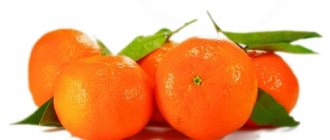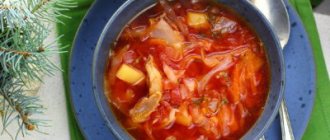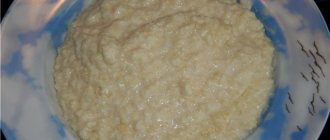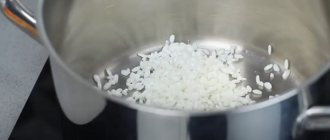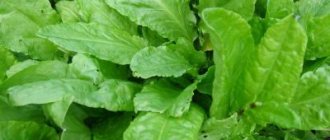Useful qualities
Oranges and tangerines have a high content of ascorbic acid.
Mandarin, like orange, is useful for children due to the presence of such positive properties:
- contain fructose, B vitamins, ascorbic acid, tocopherol, vitamin H, high potassium content, and magnesium;
- help improve the child’s immunity;
- have a beneficial effect on the heart muscle and liver;
- contain fiber and pectin, which help improve digestion and cleanse the intestines;
- have a beneficial effect in the fight against constipation or indigestion;
- increase appetite;
- cleanse the blood;
- fresh juice helps strengthen the skeletal system;
- add energy;
- relieve internal inflammation;
- help improve the metabolism of carbohydrates and lipids in the body.
Recipes for children's dishes with orange
A child over three years old can prepare a salad
Citrus fruit is called a universal product. It can complement almost any dish and goes well with many other fruits and vegetables, as well as meats and cheeses. Children are served oranges peeled, filmed and pitted.
Orange salad
This dish is served to children from 3 years old. To do this, you need to finely chop several orange slices, 5 grapes, 2-3 strawberries or 4-5 raspberries, and half an apple. It is better to dress the salad with yogurt or lemon juice diluted with water.
They also prepare a salad with orange in another version, which includes chicken fillet or boiled fish, boiled carrots, some potatoes, and a hard-boiled chicken egg. The dressing is olive or sunflower oil, kefir, but not mayonnaise.
Orange desserts
Orange desserts are suitable for babies from 1 year of age. The pulp of 2 oranges is divided into separate fibers, 2 carrots are finely grated. The ingredients are mixed together, a spoonful of raisins and sour cream are added. Served without sugar.
Another dessert is served to children from 2 years old. To prepare it, soften 100 g of boiled pumpkin, finely chop half the citrus, add a spoonful of yogurt or sour cream. The ingredients are mixed and cherry or other berry syrup is added.
Jam and candied fruits
Jam is given to children from 3 years old. It contains oranges: only the pulp or fruits with peel, berries and fruits, sometimes even vegetables (pumpkin, carrots). Jam cooked over a fire in a short time will retain more nutrients. It is often used as the basis for homemade fruit juice.
Candied fruits are also suitable for older children. They are made from orange peel with added sugar. Children with diabetes or weight problems should not use this product.
Contraindications
Parents are interested in the question: Can children eat tangerine (orange)? And, in addition to age restrictions, the answer to this question may be limited by the presence of certain ailments. It is important to know which diagnoses are contraindications for introducing citrus fruits into the diet:
- pancreatitis;
- the presence of a stomach ulcer;
- gastritis, especially accompanied by high acidity;
- diagnosed diabetes mellitus;
- individual intolerance.
Tangerines, like oranges, contain a large amount of organic acids, which irritate the mucous membranes, and the sugar included in the composition disrupts carbohydrate metabolism.
Benefit
Fresh orange fruits contain large amounts of vitamin C, glucose, magnesium and potassium. In addition, citrus fruits contain a lot of fiber, which the body needs for high-quality digestion of food. Freshly squeezed juice enriches the body with pectin, a substance necessary to ensure normal functioning of the stomach. If you eat orange regularly, you can strengthen your immune system and forget about colds. However, many children are forced to give up oranges. This is especially true for those who suffer from diathesis. If, after introducing orange into your diet, you notice allergic rashes on your body, then the fruit should be excluded for now.
Citruses and allergies
Citrus fruits are strong allergens.
Important! Citrus fruits are not recommended in the diet of a woman who is breastfeeding.
Parents should understand that among all fruits, citrus fruits most often cause allergies in a child. It is also important to know that characteristic manifestations may differ depending on the individual characteristics of the baby’s body:
- Initially, a red rash may occur, affecting large areas of the body or occurring only on the chin and cheeks;
- itching may occur;
- swelling is possible;
- an allergic reaction may be accompanied by nausea, vomiting, diarrhea, severe abdominal pain, fever;
- possible impairment of respiratory function, Quincke's edema, anaphylactic shock, which are the most dangerous consequences of an allergy to citrus fruits.
The causes of an allergic reaction in a child may be:
- presence of an autoimmune disease;
- hereditary intolerance to a certain citrus fruit;
- intestinal underdevelopment;
- gastrointestinal pathologies;
- Excessive consumption of citrus fruits.
The baby may experience negative manifestations in a situation where he has consumed a large amount of citrus fruits in one meal. In this case, both a rash and severe abdominal pain, vomiting, and diarrhea may be observed.
Harmful effects of eating oranges for children
A fruit can cause harm to a toddler only if the body is not ready to get acquainted with it. First of all, this concerns its inclusion in the child’s diet too early. Negative reactions can occur when consuming excessive amounts of citrus. This usually manifests itself in the form of abdominal discomfort, nausea, stomach upset and allergy symptoms.
Allergies can occur due to:
- Unpreparedness of the digestive system to receive citrus;
- Heredity - when one of the parents has adverse reactions to this product;
- Diseases of the gastrointestinal tract or autoimmune pathologies that can provoke allergies in the baby;
- Excessive consumption of citrus by the expectant mother during pregnancy;
- Poor ecology, which negatively affects the immune system and provokes allergies.
Optimal age
Parents who have learned about the benefits of citrus fruits are interested in the question: at what age can a child have an orange, as well as a tangerine?
- Experts do not recommend introducing citrus fruits into the diet of a baby under one year of age. Up to a year old, in almost all cases, such fruits contribute to the appearance of an allergic reaction.
- The risk of allergies becomes minimal only in children who have reached the age of three. Therefore, some parents do not try to introduce tangerines and oranges into their child’s diet until they are three years old.
- It is important to take into account the health status of the baby who wants to add citrus fruits to his diet. If a child is prone to allergic reactions or has increased acidity in the stomach, then such fruits are forbidden for him.
- A child who has reached the age of five can be given a whole fruit, but not more than twice a week. Eating large amounts of citrus fruits leads to pseudo-allergy.
When my son was 5 years old, he stayed with his grandmother for Christmas. Granny decided to please her grandson by giving him three tangerines at a time. The child immediately developed diathesis on his cheek, which lasted for several more days after starting to take antihistamines.
In what form can it be given?
For the first acquaintance, you need to squeeze out a little juice, mix it with water 1:5 and offer to try a teaspoon. In the future, to prepare an orange drink, you should adhere to a 1:1 ratio.
You can give an orange to your child not only in the form of nectar or pulp, but also add it to other dishes. After a year, you can prepare a dessert for your little one from peeled orange slices, separated into fibers, and finely grated carrots.
From the age of 2, fruit salads can be introduced into the toddler’s menu. You can also boil the pumpkin, mash it, mix it with finely chopped orange pulp and sweeten it with fruit syrup. You can use yogurt to season your dishes.
Input rules
You already know at what age you can give your child citrus fruits. Now it’s worth considering exactly how these fruits are introduced into the diet.
- The first acquaintance should be represented by only one new fruit, either an orange or a tangerine.
- The first portion can be represented by freshly squeezed juice, namely half a teaspoon. It is recommended to dilute the juice with water in a one to one ratio.
- Experts recommend giving citrus fruits in the first half of the day, after meals.
- Parents should carefully monitor the reaction of the child’s body so as not to miss the occurrence of negative manifestations.
- It is important on the day when you introduce your baby to tangerine or orange, not to introduce any new foods.
- Sometimes an allergic reaction to citrus fruits does not occur immediately, but after some time. If no negative manifestations are observed, then you can slightly increase the volume of juice given, over time stop diluting it with water, and then gradually start giving the fruit itself, then increase the single portion.
- The recommended interval after the first acquaintance with citrus fruits is three to four days. As a rule, during such a period negative phenomena have time to manifest themselves.
- When feeding a child a tangerine or orange, it is recommended to remove the peel and seeds.
How to introduce orange into complementary foods
In order not to harm the baby, this product must be added very carefully to complementary foods.
You should not offer a large portion at once. It is important that the children's digestive system gets used to citrus.
Experts give a number of recommendations regarding the introduction of this fruit into the baby’s menu:
- The first introduction should be through breast milk. Therefore, a nursing mother can start eating citrus fruits after the baby turns 3 months old;
- Despite the fact that this product can be added to complementary foods as early as 9 months, whole slices should not be given until one year of age. Initially, you need to include pulp and juice diluted with water in the menu;
- At the time of introducing citrus into baby food, there is no need to feed the baby with other types of citrus fruits, since if an allergic reaction occurs, it will be impossible to understand what triggered it;
- You should not give your toddler store-bought orange nectar - it contains unwanted additives.
Features of selection and storage
- Ripe fruits are quite heavy. Therefore, when choosing, take the fruit in your hand and try to determine its weight.
- There is an opinion that smaller fruits are the sweetest.
- When choosing fruits, you should pay attention to the absence of dents, dark circles, and traces of mold.
- The surface of the fruit should be even and smooth, the peel of the ripe fruit should be dense.
- The smell of a good orange or tangerine should be felt from a distance and be fragrant.
- It is recommended to store citrus fruits in a cool place with minimal light. The optimal storage temperature is from 5 to 10 degrees.
Now you know when a child can have an orange or a tangerine, and what age is optimal for introducing these fruits. Parents should remember how to properly introduce citrus fruits into their children's diet. It is important not to forget that the first fruits to appear in your diet should be those that grow in your territory. It is also important to remember that any tropical fruit can provoke the development of an allergic reaction.
Why allergies occur
A negative reaction to oranges is not uncommon for both children and adults. Even a small amount of fruit can cause a rash, swelling and red spots on the skin and eyelids, which impairs breathing and poor bowel function.
Such situations occur due to the active substances contained in oranges. It is possible that the fruit may contain chemicals that were used to process it for long-term transportation, storage and sale.
Why is allergy to oranges common?
Despite all the splendor of oranges, a significant drawback - allergies - limits their use in childhood. The reason for the appearance of an inadequate reaction on the part of the body is caused by one or a combination of several factors:
- failure of the digestive system due to the age of the child (usually up to 3 years);
- hereditary predisposition, when parents have a confirmed allergy to fruit;
- a woman consuming large amounts of citrus fruits during pregnancy or breastfeeding;
- diseases of the gastrointestinal tract or autoimmune diseases that provoke an allergic reaction;
- unfavorable environmental conditions, aggravating the child’s immune status and contributing to the occurrence of food allergies.
Risk factors also include the “overseas” nature of the orange, which differs from locally grown fruits. It’s not for nothing that pediatricians and nutritionists insist that parents prepare a diet for their children from fruits that are familiar to their particular place of residence.
The risk of developing allergies may be associated with the use of “chemicals” during cultivation (fertilizers, drugs to combat diseases and pests, ripening stimulants). There is also a danger in processing fruits with means to facilitate transportation and preserve their presentation.
Other citrus fruits in a baby's diet
- In the children's menu, among representatives of the citrus family, tangerines compete with oranges - children welcome their sweet taste, diluted with a slight sour tint, and delicate aroma enclosed in a bright peel.
- Lemon, kumquat (fortunella) and lime, due to their pronounced sour taste, are used to prepare drinks and more complex culinary experiments.
- Grapefruits have a less sweet taste than oranges. They are not sour, but have a specific bitterness. They are offered to children in a purified form - the bitter translucent film is first removed from the slices.
- The largest exotic fruit is the pomelo. The sweet taste of the yellow fruits is reminiscent of an orange, the red ones are similar to grapefruit, and the smell of the green ones is slightly reminiscent of pine needles.
